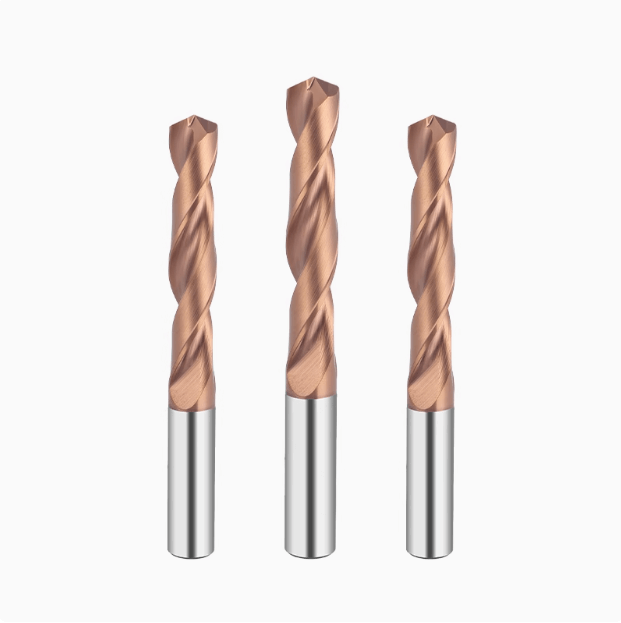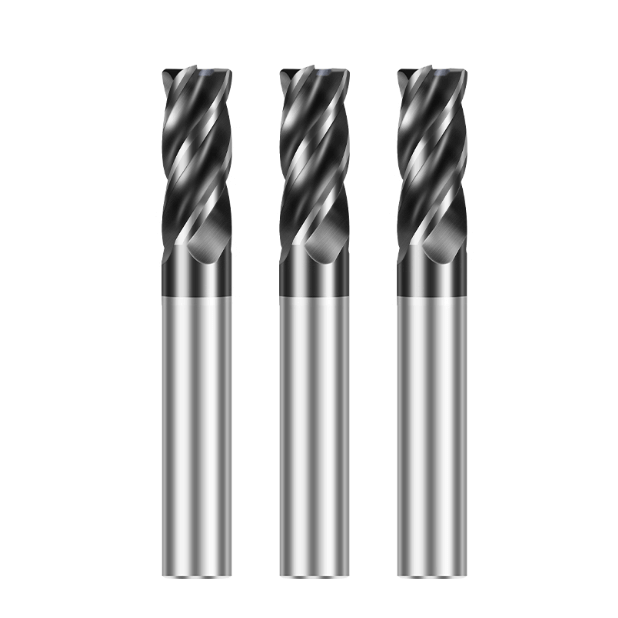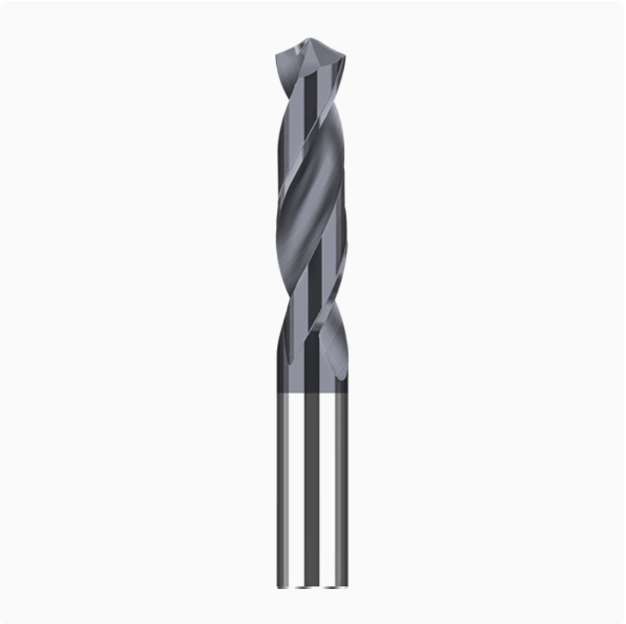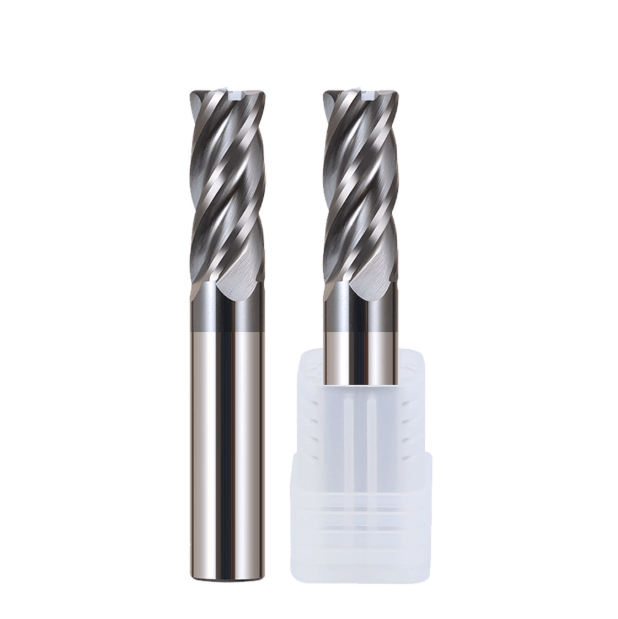High-precision hole machining depends heavily on drill bit selection and process optimization, as they directly determine hole diameter stability and surface quality. When using a twist drill bit in CNC drilling, properly matching material, geometry, and cutting conditions can significantly reduce hole diameter errors and eccentricity. For hardened steel or high-strength alloys, using a twist drill bit for hardened steel or a high-performance carbide twist drill bit ensures accuracy while extending tool life.
For complex workpieces or special hole shapes, custom twist drill bits provide personalized geometric designs to optimize chip evacuation, reduce cutting forces, and maintain stable hole center accuracy even during deep or multi-hole machining. By carefully adjusting cutting speeds, feed rates, and cooling strategies, in combination with the performance characteristics of the CNC drilling twist drill bit, operators can achieve high-efficiency machining while avoiding common problems such as chipping, oversize holes, and rough hole walls.

The Impact of Selecting the Right Twist Drill Bit on Hole Accuracy
Selecting the right twist drill bit is critical to achieving precise hole diameters and surface finishes. Different materials impose varying requirements on drill performance based on hardness, toughness, and thermal conductivity. For high-hardness or hardened steel, using a twist drill bit for hardened steel prevents chipping and hole diameter deviation while maintaining smooth hole finishes. For soft materials like aluminum or copper, high-performance carbide twist drill bits improve chip evacuation and maintain diameter stability at high drilling speeds.
Drill bit geometry—including point angle, helix angle, and diameter—also directly impacts hole accuracy. Proper geometric parameters optimize cutting forces, improve chip evacuation, reduce runout, and lower wall roughness, enhancing overall CNC drilling precision. Correct drill selection and geometry matching are fundamental to high-precision hole production, longer tool life, and improved productivity.
Drill Bit Selection Requirements for Different Materials
-
Hardened steel / high-strength alloys: Use twist drill bits for hardened steel for high wear and chipping resistance, maintaining hole diameter and position under high cutting forces.
-
Soft materials (aluminum, copper): High-performance carbide twist drill bits reduce chip adhesion and wall deformation during high-speed cutting.
-
Diameter & geometry selection: Smaller or deep-hole machining often requires a smaller helix angle to optimize chip evacuation, while larger holes benefit from increased point angles to improve center guidance. Proper geometry ensures stable hole diameter and accuracy.
Advantages of Customized Drill Bits in Complex Hole Machining
Standard drill bits often fail for complex geometries or deep holes. Custom twist drill bits with tailored helix angles, drill point angles, and flute shapes optimize cutting performance for inclined, special-shaped, or deep holes.
Benefits include:
-
Improved chip evacuation efficiency
-
Reduced drill runout
-
Consistent hole diameters during high-precision CNC drilling
For precision parts or special materials, custom twist drill bits extend tool life and reduce secondary corrections, achieving stable and efficient hole production.
白底-主图2-300x300.jpg)
CNC Drilling Process Parameter Optimization
In high-precision CNC drilling, selecting the right twist drill bit is only the first step. Proper process parameter optimization is equally critical. By carefully controlling cutting speed, feed rate, drilling depth, and cooling strategy, operators can minimize hole diameter deviation, wall roughness, and drill wear. Adjusting parameters for specific materials and drill types directly impacts CNC drilling twist drill bit performance, ensuring consistent high-precision holes and stable production efficiency.
Best Practices for Cutting Speed and Feed Rate
Cutting speed and feed rate strongly influence hole diameter accuracy. Requirements vary by material:
-
Hardened steel / high-strength alloys: Use twist drill bits for hardened steel at lower speeds to prevent overheating and chipping.
-
Soft materials (aluminum, copper): Carbide twist drill bits can maintain diameter stability at higher speeds while improving productivity.
Matching cutting speed and feed rate with drill diameter and geometry optimizes chip evacuation and reduces hole deviation and wall roughness. Reference tables for different materials and drill types provide intuitive guidance for operators, supporting stable, high-precision CNC drilling.
Drilling Depth and Coolant Strategy
Drill depth affects both chip evacuation and hole accuracy. In deep-hole machining, chips can clog flutes, causing oversize holes or rough walls. Using custom twist drill bits or optimized CNC drilling twist drill bits with the right coolant strategy helps control cutting temperature and facilitates chip removal.
-
Dry cutting: Suitable for heat-resistant carbide drills; reduces coolant contamination but requires strict parameter control.
-
Wet cutting / oil mist cooling: Extends tool life and improves wall finish during prolonged machining.
Selecting the correct cooling method is essential for successful deep and high-precision drilling.
Multi-Hole Machining and Repeatability
For multi-hole workpieces, fixture design and machine tool repeatability strongly influence final hole quality.
-
Proper spacing ensures accurate positioning of each hole and reduces cumulative diameter errors.
-
Optimizing chip removal and drilling stability with the correct twist drill bit maintains high precision during continuous drilling.
-
Standardizing fixtures and precise positioning ensures consistent hole diameter and position in batch production.
-白底主图2-300x300.jpg)
Drill Wear and Life Management
In high-precision CNC drilling, drill wear directly affects hole diameter accuracy, hole wall quality, and production stability. Even with high-performance carbide twist drill bits or dedicated CNC drilling twist drill bits, neglecting systematic wear monitoring and life management can lead to oversize holes, poor roundness, or rough walls.
Monitoring wear patterns and implementing a structured regrinding and replacement strategy can extend tool life, reduce machining errors, and improve production efficiency.
Identifying the Relationship Between Wear Type and Hole Accuracy
Common drill wear types include:
-
Spiral flute wear: Reduces chip evacuation efficiency, causing larger holes or rough walls.
-
Drill tip chipping: Directly impacts hole centering and roundness.
-
Edge rounding or coating flaking: Lowers cutting efficiency and increases deviation risk.
Material differences:
-
Carbide twist drill bits provide superior wear resistance and chipping resistance when machining hard materials.
-
HSS drill bits are less expensive but exhibit poor diameter stability during long runs or when drilling hardened materials.
Identifying wear types and selecting the appropriate drill material is essential for consistent high-precision CNC drilling and accurate hole diameter control.
Regrinding and Replacement Strategies
To maintain tool life and hole accuracy:
-
Regrind drill tips to restore geometry and sharpness.
-
Optimize spiral flute chip evacuation and maintain consistent hole diameters.
-
Monitor drill counts, cutting forces, and hole deviation to determine the optimal time for regrinding or replacement.
Combining proper regrinding with CNC drilling twist drill bit performance ensures consistent hole diameter and position, enhancing machining efficiency.
-白底主图1-300x300.jpg)
High-Precision Holemaking Techniques
Even with the right twist drill bit and optimized CNC drilling parameters, achieving high-precision holes requires careful operation techniques. Proper process design, controlled chip evacuation, and maintaining hole wall quality are essential for precise hole diameter, roundness, and position.
By combining custom twist drill bits or high-performance carbide twist drill bits with pre-drilling, chamfering, and deep-hole strategies, stable and repeatable holemaking results can be achieved for complex parts and high-hardness materials.
Pre-drilling, Chamfering, and Advanced Hole Cleaning Techniques
-
Pre-drilling: Using a smaller-diameter drill first reduces cutting force concentration on the larger drill, minimizing runout and eccentricity.
-
Chamfering: Improves hole finish and facilitates smooth chip evacuation during subsequent drilling.
-
Advanced hole cleaning techniques: Using the right CNC twist drill bit in combination with optimized chip evacuation reduces chip accumulation, hole wall scratches, and diameter expansion, improving overall drilling accuracy and process stability.
Considerations for Deep and Blind Hole Machining
Deep or blind hole machining, especially with twist drill bits for hardened steel, requires specialized procedures to maintain accuracy:
-
Step drilling: Reduces cutting load, minimizes drill runout, and limits hole diameter deformation.
-
Gradual tool retraction: Facilitates smooth chip evacuation and prevents blockage or wall damage.
-
Parameter control: Optimizing drill extension length, cutting speeds, feed rates, and coolant strategies extends tool life and maintains diameter consistency.
-
Custom twist drill bit design: Personalized geometry improves accuracy in hard materials or complex hole shapes, ensuring stable high-precision CNC drilling results.
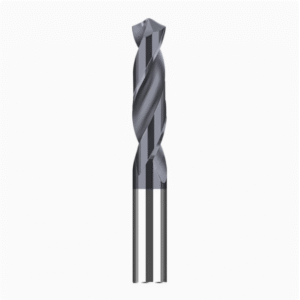
Maximizing Holemaking Accuracy Using Twist Drill Bits in CNC Drilling
Achieving precise hole diameter, position, and wall quality in CNC drilling relies not only on high-performance twist drill bits but also on a systematic integration of:
-
Drill bit selection based on material:
-
Twist drill bits for hardened steel for hardened materials, improving chipping resistance and diameter stability.
-
Carbide twist drill bits for soft metals like aluminum and copper, maintaining diameter consistency at high speeds.
-
Custom twist drill bits for complex or deep holes, optimizing chip evacuation and cutting force distribution.
-
-
CNC process parameter optimization: Cutting speed, feed rate, step drilling, gradual tool retraction, and coolant strategies reduce drill runout and diameter deviation.
-
Drill wear monitoring and life management: Spiral flute wear and drill tip chipping directly affect diameter and roundness. A structured regrinding and tool replacement strategy extends drill life and reduces error accumulation.
-
Operator techniques: Pre-drilling, chamfering, advanced hole cleaning, and deep-hole strategies ensure repeatable, high-quality results.
By integrating these strategies, manufacturers can maintain stable, high-precision CNC drilling across various materials and complex hole geometries.



